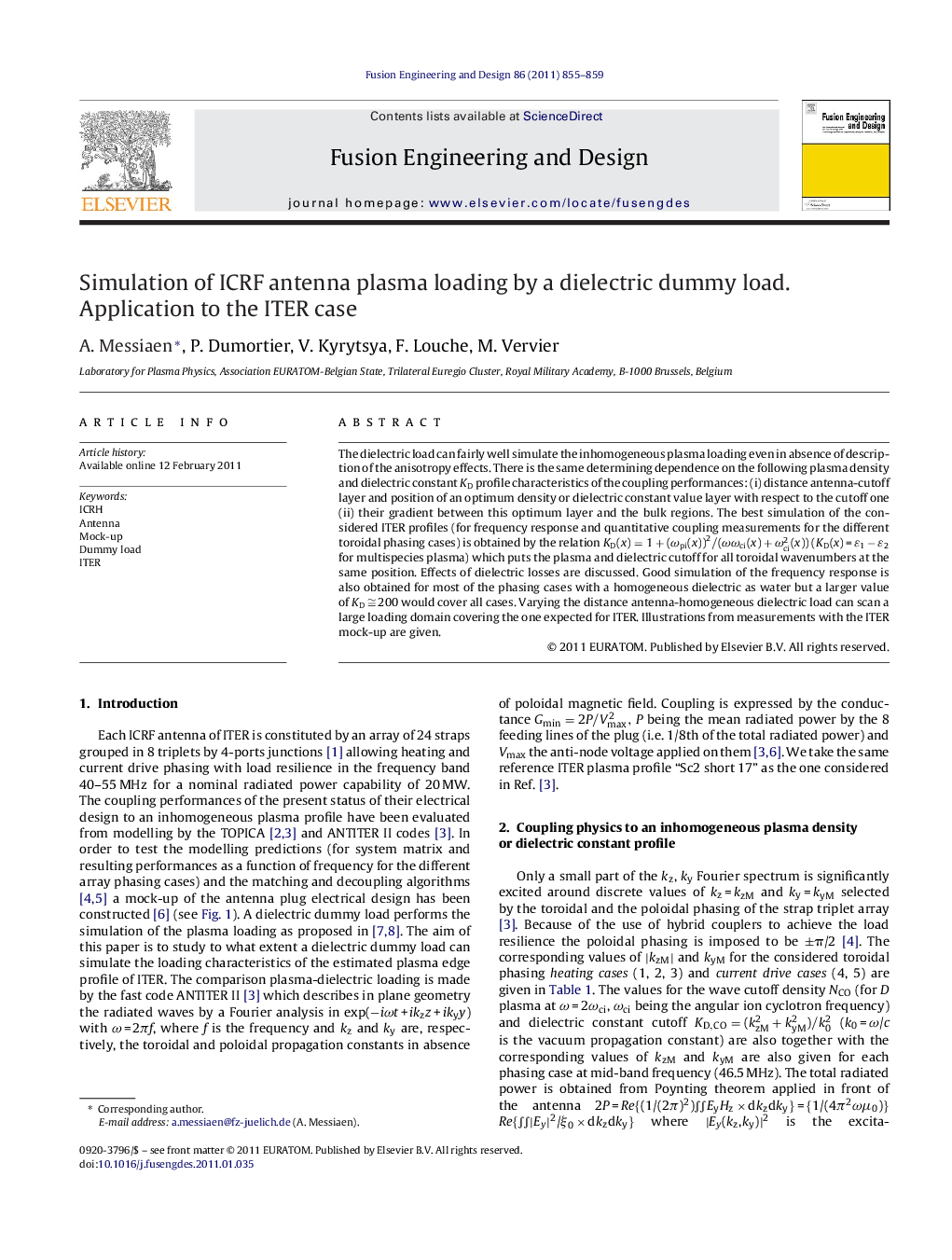| Article ID | Journal | Published Year | Pages | File Type |
|---|---|---|---|---|
| 272558 | Fusion Engineering and Design | 2011 | 5 Pages |
The dielectric load can fairly well simulate the inhomogeneous plasma loading even in absence of description of the anisotropy effects. There is the same determining dependence on the following plasma density and dielectric constant KD profile characteristics of the coupling performances: (i) distance antenna-cutoff layer and position of an optimum density or dielectric constant value layer with respect to the cutoff one (ii) their gradient between this optimum layer and the bulk regions. The best simulation of the considered ITER profiles (for frequency response and quantitative coupling measurements for the different toroidal phasing cases) is obtained by the relation KD(x)=1+(ωpi(x))2/(ωωci(x)+ωci2(x)) (KD(x) = ɛ1 − ɛ2 for multispecies plasma) which puts the plasma and dielectric cutoff for all toroidal wavenumbers at the same position. Effects of dielectric losses are discussed. Good simulation of the frequency response is also obtained for most of the phasing cases with a homogeneous dielectric as water but a larger value of KD ≅ 200 would cover all cases. Varying the distance antenna-homogeneous dielectric load can scan a large loading domain covering the one expected for ITER. Illustrations from measurements with the ITER mock-up are given.
